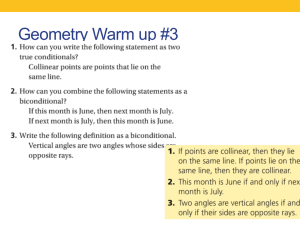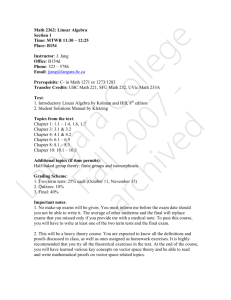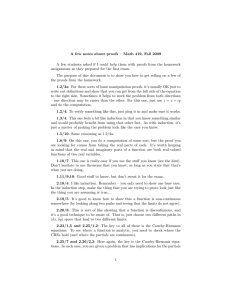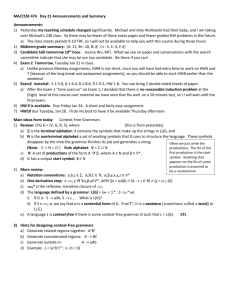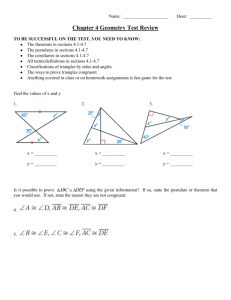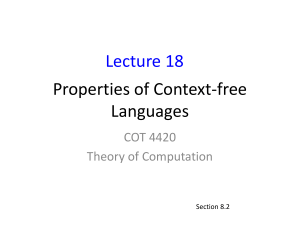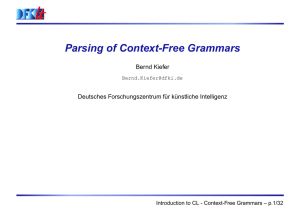CSE396, Spring 2016 Problem Set 5 Due Thu. Mar. 24
advertisement
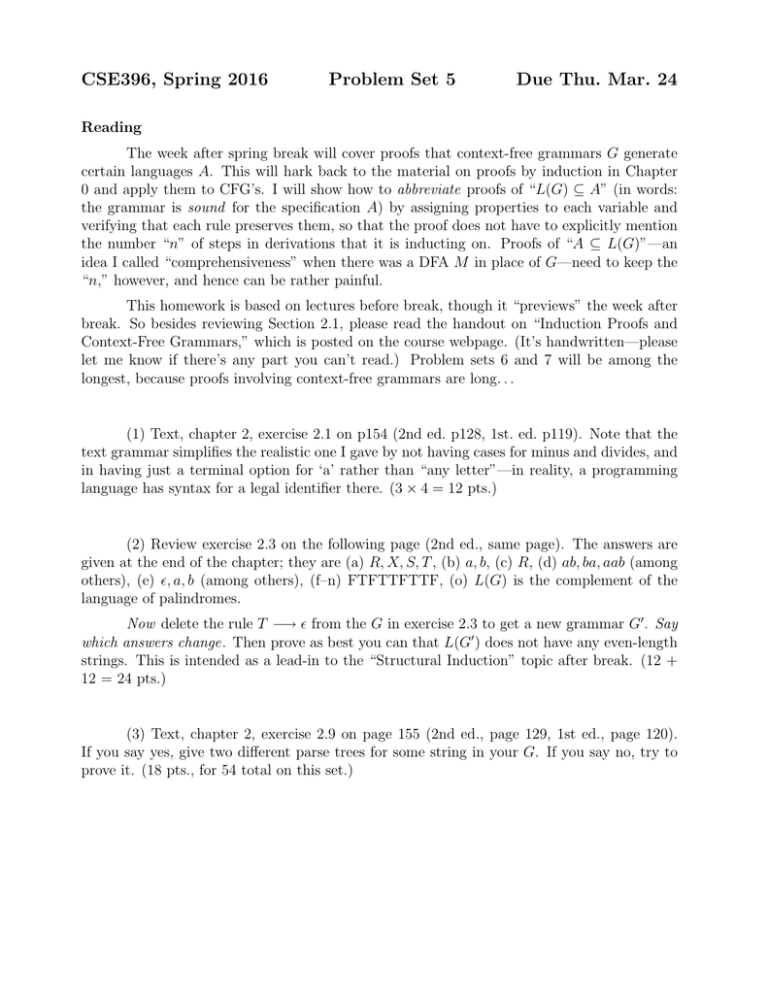
CSE396, Spring 2016 Problem Set 5 Due Thu. Mar. 24 Reading The week after spring break will cover proofs that context-free grammars G generate certain languages A. This will hark back to the material on proofs by induction in Chapter 0 and apply them to CFG’s. I will show how to abbreviate proofs of “L(G) ⊆ A” (in words: the grammar is sound for the specification A) by assigning properties to each variable and verifying that each rule preserves them, so that the proof does not have to explicitly mention the number “n” of steps in derivations that it is inducting on. Proofs of “A ⊆ L(G)”—an idea I called “comprehensiveness” when there was a DFA M in place of G—need to keep the “n,” however, and hence can be rather painful. This homework is based on lectures before break, though it “previews” the week after break. So besides reviewing Section 2.1, please read the handout on “Induction Proofs and Context-Free Grammars,” which is posted on the course webpage. (It’s handwritten—please let me know if there’s any part you can’t read.) Problem sets 6 and 7 will be among the longest, because proofs involving context-free grammars are long. . . (1) Text, chapter 2, exercise 2.1 on p154 (2nd ed. p128, 1st. ed. p119). Note that the text grammar simplifies the realistic one I gave by not having cases for minus and divides, and in having just a terminal option for ‘a’ rather than “any letter”—in reality, a programming language has syntax for a legal identifier there. (3 × 4 = 12 pts.) (2) Review exercise 2.3 on the following page (2nd ed., same page). The answers are given at the end of the chapter; they are (a) R, X, S, T , (b) a, b, (c) R, (d) ab, ba, aab (among others), (e) , a, b (among others), (f–n) FTFTTFTTF, (o) L(G) is the complement of the language of palindromes. Now delete the rule T −→ from the G in exercise 2.3 to get a new grammar G0 . Say which answers change. Then prove as best you can that L(G0 ) does not have any even-length strings. This is intended as a lead-in to the “Structural Induction” topic after break. (12 + 12 = 24 pts.) (3) Text, chapter 2, exercise 2.9 on page 155 (2nd ed., page 129, 1st ed., page 120). If you say yes, give two different parse trees for some string in your G. If you say no, try to prove it. (18 pts., for 54 total on this set.)

